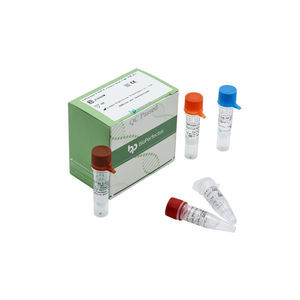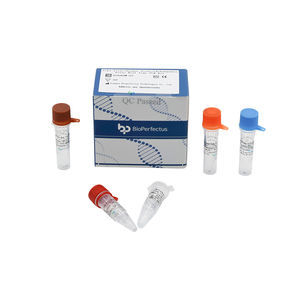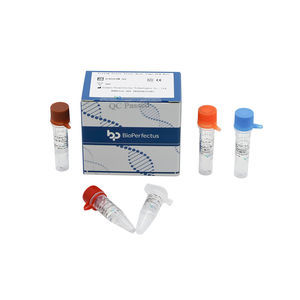
- Laboratory
- Laboratory medicine
- HPV test kit
- Jiangsu Bioperfectus Technologies Co., Ltd.

- Products
- Catalogs
- News & Trends
- Exhibitions
Sexually transmitted disease test kit JC80301NW seriesHPVfor cervical cellsfor real-time PCR
Add to favorites
Compare this product
Characteristics
- Applications
- for sexually transmitted diseases
- Micro-organism
- HPV
- Sample type
- for cervical cells
- Analysis mode
- for real-time PCR
- Result display time
90 min
Description
Cervical cancer is a life-threating disease in the women’s cervix, which is the fourth killer among cancers for females.
The human papillomavirus (HPV) is a group of DNA virus that only infect with human mucosal cells or epithelial cells and can cause to cancer. There are more than 100 types of HPV. Each type has specific preferred infected area. These HPV can be classified into two groups according to the potential risks to develop cancer, high-risk HPV (16, 18, 31, 33, 35, 39, 45, 51, 52, 56, 58 and 59, 66 and 68) and low-risk HPV (6, 11, 81).
Cervical cancer is a preventable cancer. To decrease morbidity and mortality of cervical cancer, encouraging women to take regular HPV screening is important. By the guideline published by WHO in 2021, WHO recommends using HPV DNA detection as the primary screening test for both of “screen-and-treat approach” and “screen, triage and treat approach”.
High-risk HPV DNA detecting for screening can more sensitively identify cervical intraepithelial neoplasia (CIN) than other methods. Screening high-risk HPV can avoid unnecessary colposcopy procedures and improve the clinical management. When certain type of HPV is identified more than once during 6 months, the patient can be considered as constant infection and further triage should be taken. It enables women to access to diagnosis at the early stage of HPV infection and to get treatment before development of precancerous lesions and cervical cancer. The quantity of high-risk HPV loads has positive correlation with the increased risk of cervical cancer and precancerous lesions. The value of HPV virus load also can predict development of residual lesions after treatment.
Other Jiangsu Bioperfectus Technologies Co., Ltd. products
Assay
Related Searches
- Assay kit
- Solution reagent kit
- Blood assay kit
- Molecular biology reagent kit
- Serum assay kit
- Immunoassay assay kit
- Plasma assay kit
- Infectious disease detection kit
- Respiratory infection test kit
- Whole blood detection kit
- Clinical assay kit
- Cassette assay kit
- Lateral flow test kit
- COVID-19 detection kit
- Real-time PCR test kit
- Research assay kit
- IgG test kit
- Strip detection kit
- Laboratory detection kit
- Cell assay kit
*Prices are pre-tax. They exclude delivery charges and customs duties and do not include additional charges for installation or activation options. Prices are indicative only and may vary by country, with changes to the cost of raw materials and exchange rates.




























